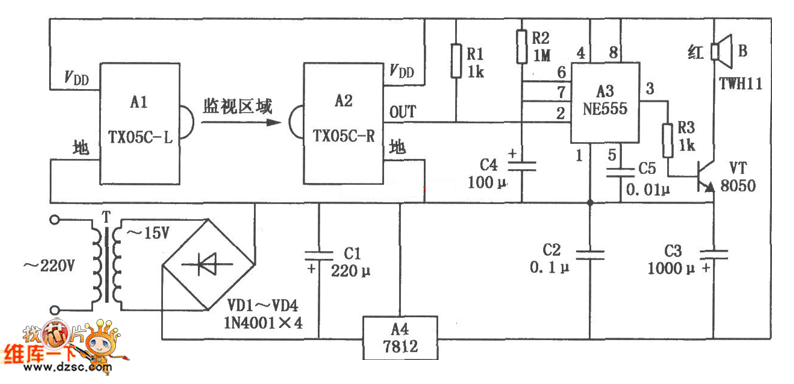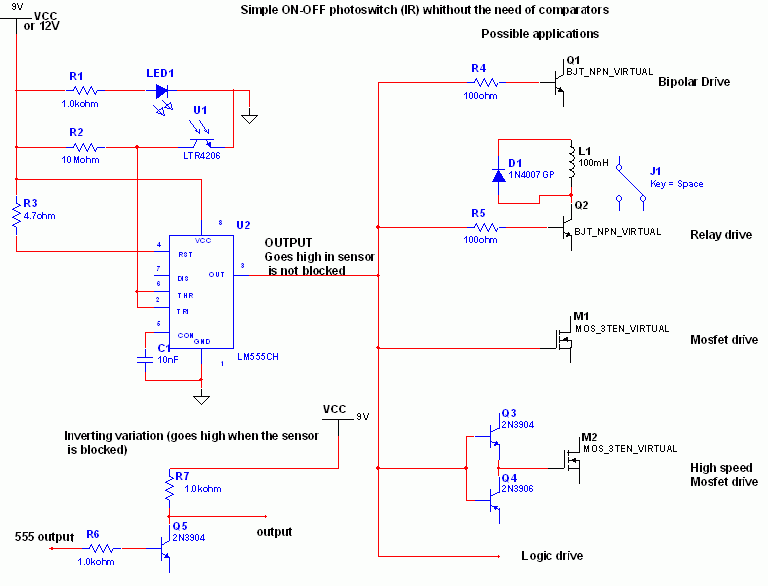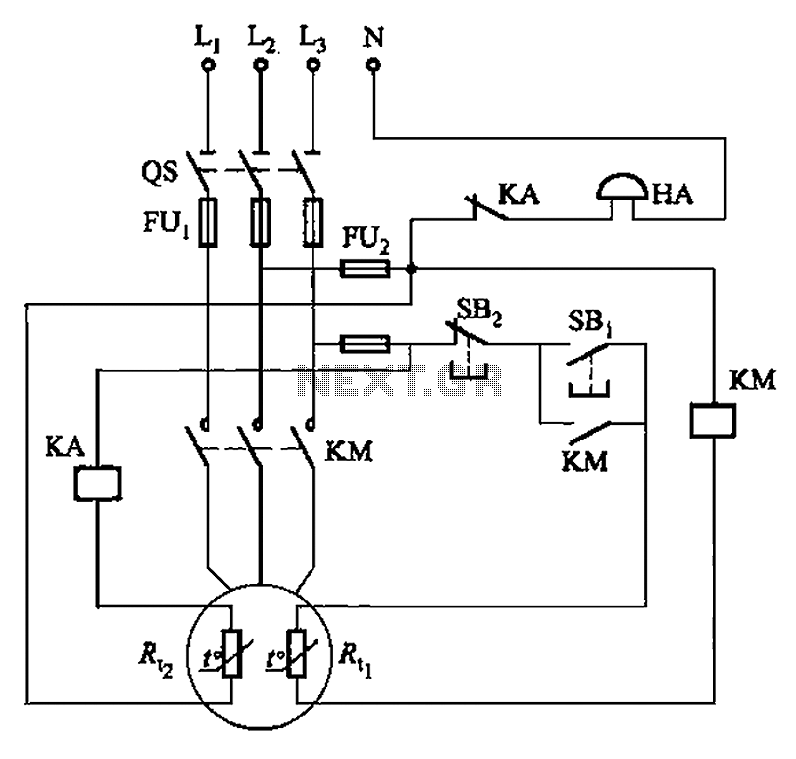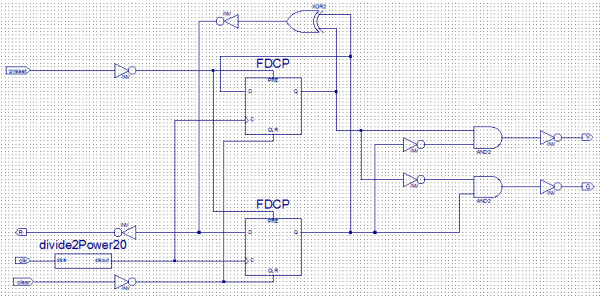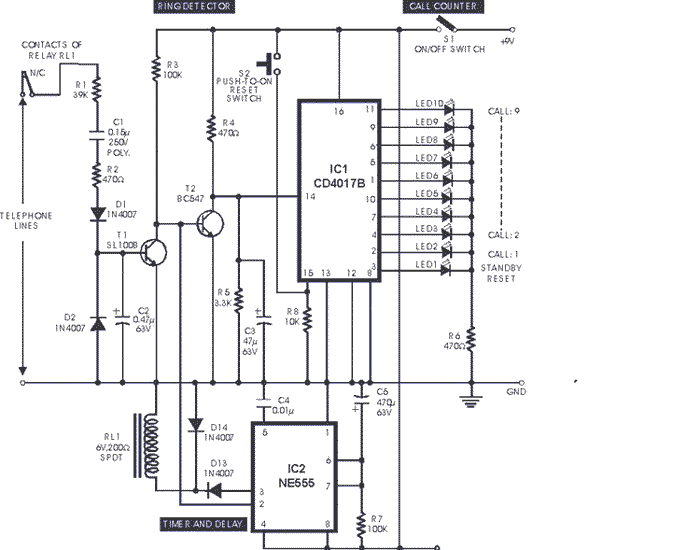
Wide-Range Crystal Oscillator Circuit
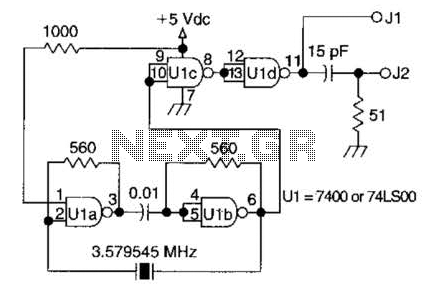
A circuit utilizing one 7400 TTL can operate with fundamental type crystals ranging from 1 to approximately 13 MHz. The output is rich in harmonics, making this oscillator suitable for calibration and testing applications.
The circuit in question employs a 7400 series TTL (Transistor-Transistor Logic) integrated circuit, which is a quad 2-input NAND gate. This configuration allows for the creation of a versatile oscillator capable of generating frequencies within the range of 1 to 13 MHz. The use of fundamental type crystals ensures stable oscillation, while the inherent characteristics of the 7400 TTL contribute to the generation of a signal that is rich in harmonics.
In practical applications, the rich harmonic content of the output signal can be advantageous. It enables the circuit to be utilized in various calibration scenarios, where specific frequency components are required for testing equipment or systems. The oscillator can be configured to produce not only the fundamental frequency but also its harmonics, which can be selectively filtered or amplified for specific test conditions.
To implement this circuit, a fundamental crystal oscillator can be connected to the input of the NAND gates, with feedback paths established to sustain oscillation. The output can be taken from one of the NAND gates, providing a square wave signal. Additional components, such as capacitors and resistors, may be used to fine-tune the oscillation frequency and stabilize the output waveform.
This oscillator circuit is particularly useful in laboratory settings or in applications where precise frequency generation is critical, such as in RF (Radio Frequency) testing and calibration of measurement instruments. The design's simplicity, combined with the robust performance of the 7400 TTL, makes it a reliable choice for engineers and technicians seeking effective solutions for frequency generation. A circuit using one 7400 TTL10 can use crystals of the fundamental type, from 1 to about 13 MHz. Output is rich in harmonics, making this oscillator useful for calibrations and test applications.
The circuit in question employs a 7400 series TTL (Transistor-Transistor Logic) integrated circuit, which is a quad 2-input NAND gate. This configuration allows for the creation of a versatile oscillator capable of generating frequencies within the range of 1 to 13 MHz. The use of fundamental type crystals ensures stable oscillation, while the inherent characteristics of the 7400 TTL contribute to the generation of a signal that is rich in harmonics.
In practical applications, the rich harmonic content of the output signal can be advantageous. It enables the circuit to be utilized in various calibration scenarios, where specific frequency components are required for testing equipment or systems. The oscillator can be configured to produce not only the fundamental frequency but also its harmonics, which can be selectively filtered or amplified for specific test conditions.
To implement this circuit, a fundamental crystal oscillator can be connected to the input of the NAND gates, with feedback paths established to sustain oscillation. The output can be taken from one of the NAND gates, providing a square wave signal. Additional components, such as capacitors and resistors, may be used to fine-tune the oscillation frequency and stabilize the output waveform.
This oscillator circuit is particularly useful in laboratory settings or in applications where precise frequency generation is critical, such as in RF (Radio Frequency) testing and calibration of measurement instruments. The design's simplicity, combined with the robust performance of the 7400 TTL, makes it a reliable choice for engineers and technicians seeking effective solutions for frequency generation. A circuit using one 7400 TTL10 can use crystals of the fundamental type, from 1 to about 13 MHz. Output is rich in harmonics, making this oscillator useful for calibrations and test applications.
